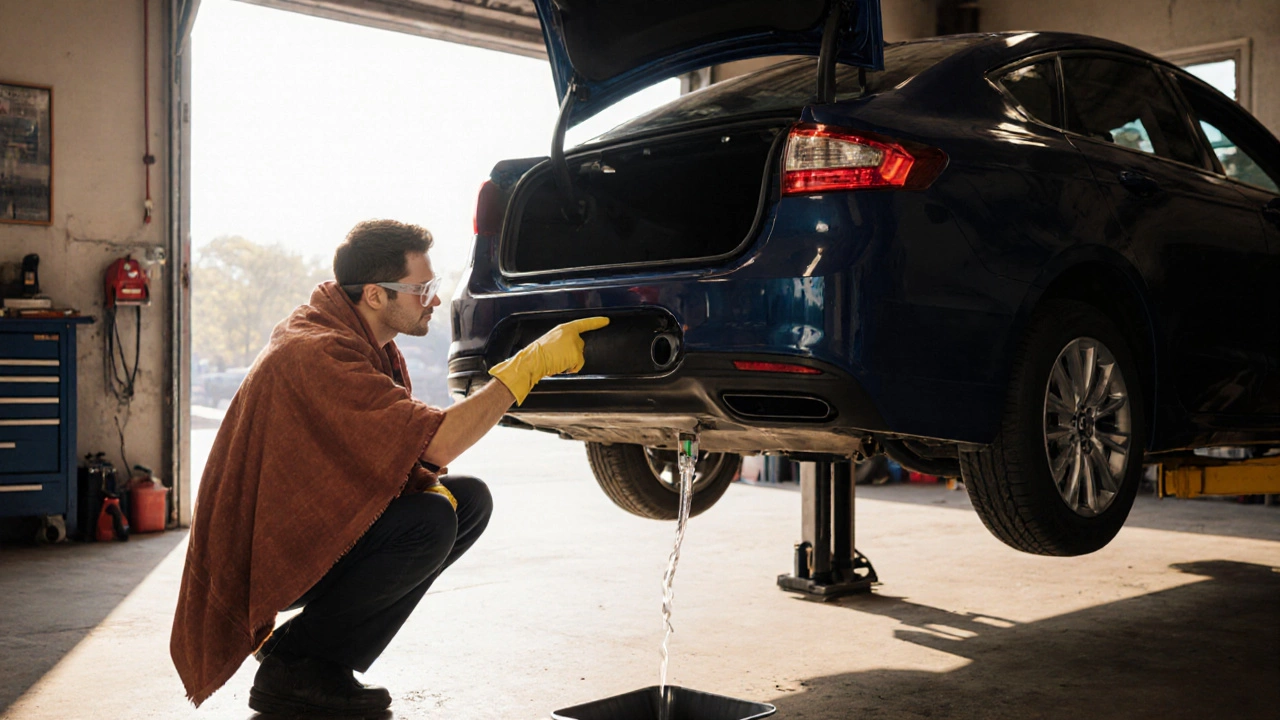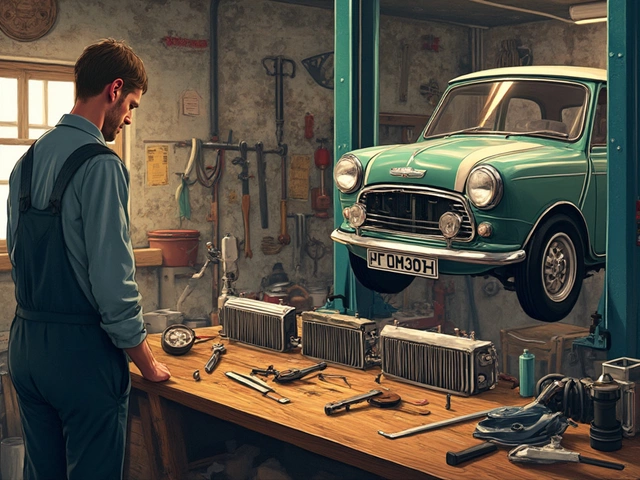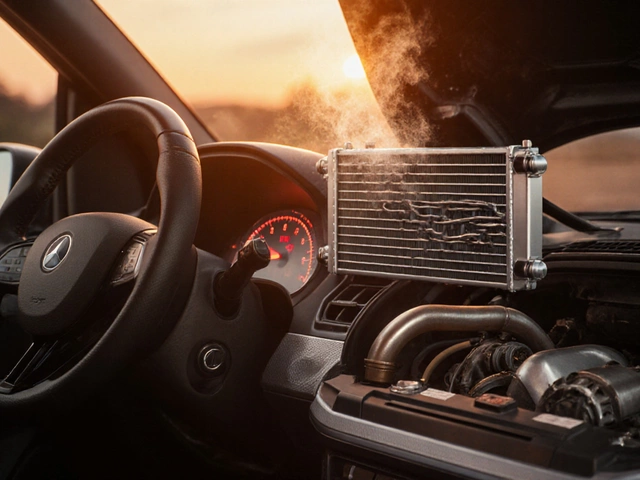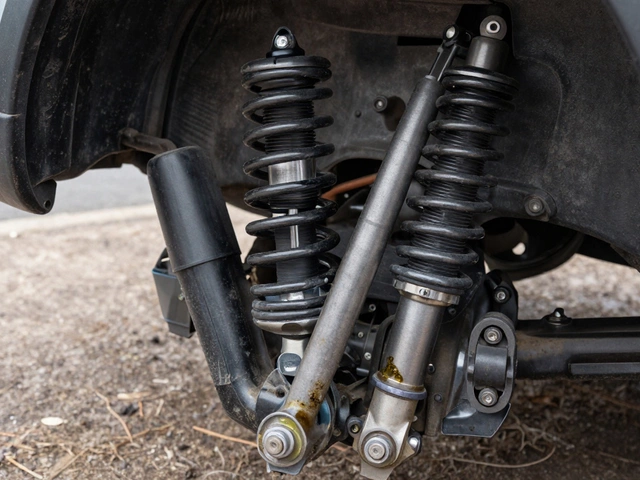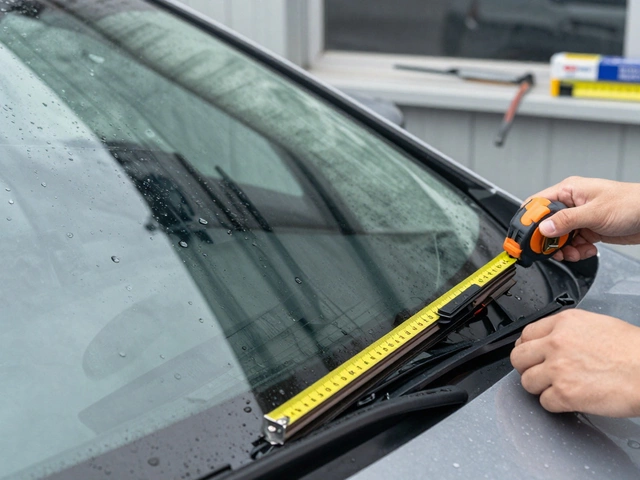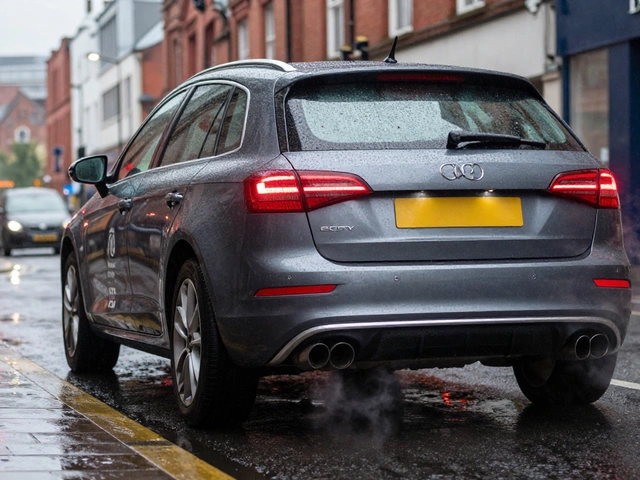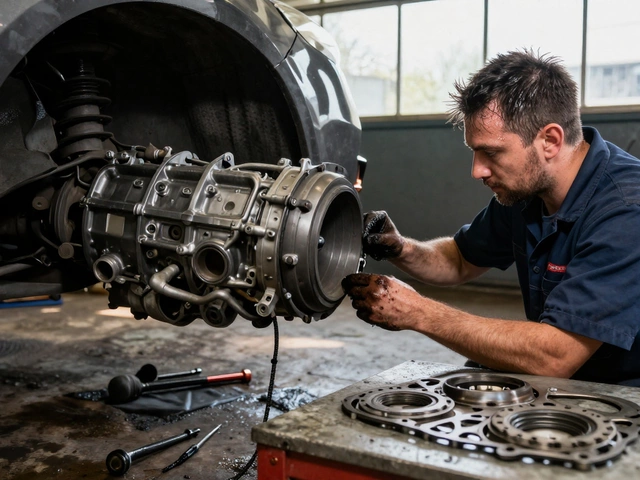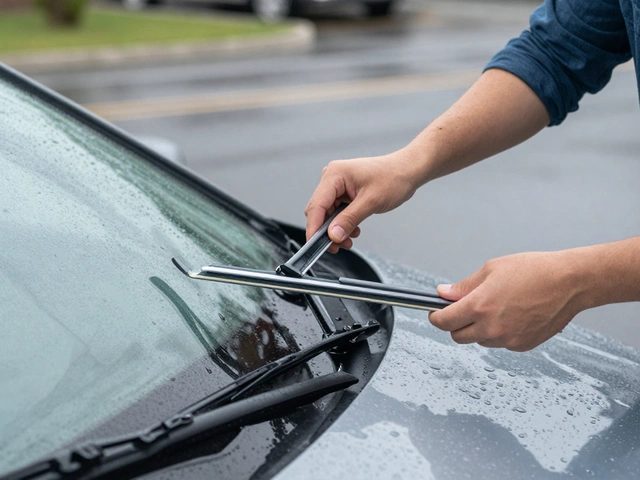Ever wondered if you have to drain the whole tank before swapping out a Fuel Pump the component that pushes gasoline from the tank to the engine? You’re not alone. Mechanics, DIY‑ers, and even seasoned hobbyists ask the same thing when a pump starts humming, sputtering, or just won’t turn on. The short answer is: you don’t always need a completely empty tank, but you do need enough safety measures to keep fuel from spilling, igniting, or ruining your garage floor.
What the "empty tank" myth is really about
When you hear “empty tank,” most people picture a car sitting on a lift with a bright orange container catching every last drop. The idea comes from two genuine concerns:
- Fire risk - gasoline vapour is heavier than air and can travel to a spark source.
- Spillage cleanup - a full tank can dump a quart or more when you disconnect fuel lines.
Both are valid, but they don’t automatically mean you must pump every ounce out. Modern fuel pumps sit inside a sealed module that includes a relief valve and a Fuel Pump Reluctor. The relativity of pressure inside the tank means you can work with a partially full tank if you control the pressure and keep the work area ventilated.
When an empty tank is truly required
There are three scenarios where you should empty the tank completely:
- High‑performance or racing setups - these often use low‑volume fuel lines and have little room for vapour. Any spill can affect the balance of the car.
- Vehicles with a single‑point pump - older models where the pump sits directly on the tank floor. Removing the pump usually means dropping the tank, and a full tank makes the job heavy and slippery.
- When you lack proper safety gear - if you don’t have fire‑proof blankets, a spill pan, or a well‑ventilated workspace, it’s safest to drain the fuel.
If none of these apply, you can get away with a partial‑drain approach.
Step‑by‑step guide: Replacing a fuel pump with a partially full tank
- Prep the vehicle - Engage the parking brake, disconnect the negative battery terminal, and raise the car with a floor jack and jack stands. Safety first.
- Relieve tank pressure - Locate the fuel pump Reluctor (often a small plug on the top of the tank). Loosen it gently; you’ll hear a hiss as pressure equalises.
- Remove the fuel line from the tank - Use a length of clear tubing or a fuel line disconnect tool. Have an absorbent spill pan ready; a few ounces may escape.
- Access the pump - Most modern cars have a removable access panel under the rear seat or trunk. Unscrew it and pull the pump module out, keeping the wiring harness plugged in.
- Swap the pump - Disconnect the electrical connector, replace the old pump, and re‑secure the module with its mounting bolts. If the new pump includes a built‑in fuel filter, check the filter’s orientation.
- Re‑install the access panel - Ensure the seal gasket is clean; a bad seal will cause future leaks.
- Reconnect fuel lines - Push the line back onto the pump inlet. You may hear a brief clunk as the line seats.
- Prime the system - Turn the ignition on (without starting) for two seconds, then off. Repeat three times. This cycles fuel through the pump and removes any air.
- Start the engine - It should run smoothly within a few seconds. Listen for any abnormal whining that could indicate a mis‑installed pump.
- Check for leaks - Inspect the pump inlet, fuel lines, and the access panel for any drips. Tighten if needed.
That’s it - you’ve changed the pump without draining the whole tank.
Tools and equipment checklist
- Floor jack and jack stands (rated for your vehicle’s weight)
- Socket set with extensions - most pumps use 10 mm or 13 mm bolts
- Fuel line disconnect tool (optional but handy)
- Absorbent spill pan or catch‑bowl
- Fire‑proof blanket or sand bucket
- Battery terminal wrench
- New fuel pump (OEM or high‑flow aftermarket)
- Safety goggles and nitrile gloves
- Ventilated workspace - open garage doors or run a fan
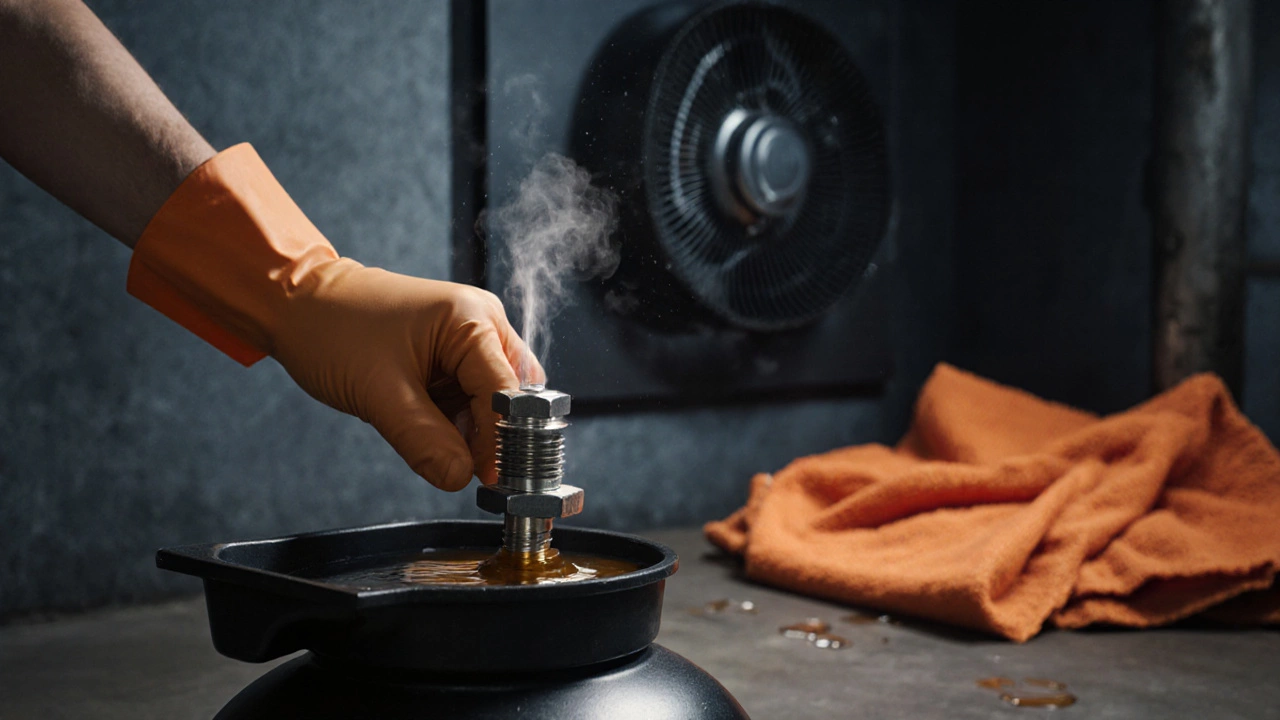
Empty‑tank vs. Partial‑drain: Quick comparison
| Aspect | Empty‑Tank Method | Partial‑Drain Method |
|---|---|---|
| Safety (fire/spill) | Highest - no fuel present to ignite | Good - only small amount of fuel may escape |
| Time required | 2-4 hours (drain, pump out, clean) | 45 minutes-1 hour |
| Equipment needed | Fuel transfer pump, larger spill containment | Standard spill pan, basic tools |
| Complexity | Higher - you may need to remove the tank | Lower - access panel usually sufficient |
| When to choose | High‑performance cars, lack of ventilation, single‑point pumps | Most everyday sedans, SUVs, when you have decent ventilation |
Common pitfalls and pro tips
- Don’t forget to relieve pressure. Even a slight over‑pressurised tank can spray fuel when you disconnect the line.
- Watch the fuel filter. Some pumps come with an integrated filter that should be replaced every 30 000 mi. Skipping it invites future clogs.
- Verify electrical connectors. Corroded pins cause intermittent pump failure. Clean with a contact cleaner.
- Mind the pump orientation. Many pumps have a directional flow arrow; install it the right way or you’ll get weak fuel pressure.
- Prime before you start. Skipping the ignition‑on‑off cycles often leads to hard starts or stalling.
- Check the vent hose. If the vent is blocked, the pump can run dry and overheat.
Bottom line
You don’t always need an empty fuel tank to change a fuel pump replacement, but you do need to manage pressure, contain any leaks, and work in a ventilated area. For most daily drivers, a partial‑drain approach saves time and effort while keeping safety at an acceptable level. Reserve the full‑drain method for high‑performance builds, single‑point pump designs, or when you lack proper safety gear.
Do I need to disconnect the battery before changing the pump?
Yes. Disconnecting the negative terminal eliminates any chance of an electrical spark while you’re handling fuel lines or the pump’s electrical connector.
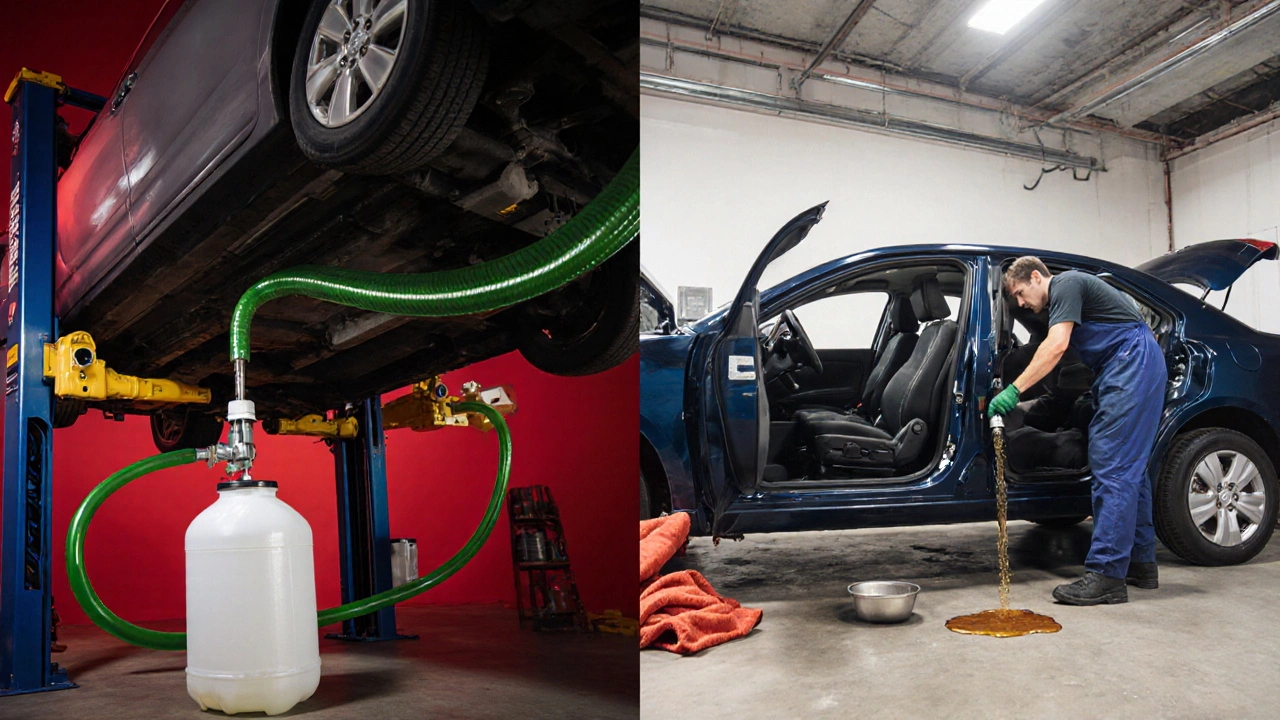
Can I use a regular garden hose to drain the tank?
It’s not recommended. Garden hoses aren’t rated for gasoline and can crack. A purpose‑built fuel transfer pump with a compatible hose is safest.
What’s the typical cost of a replacement fuel pump?
A standard OEM pump costs between $150‑$250 in the UK, while high‑flow aftermarket units can run $300‑$450. Labor, if you hire a garage, adds roughly £80‑£120.
Will a partially full tank affect the pump’s break‑in period?
No. Modern pumps are pre‑lubricated and don’t require a special break‑in. Just prime the system as described and you’re good to go.
How often should the fuel pump be replaced?
Most pumps last 100,000‑150,000 km. If you notice sputtering, loss of power, or the check‑engine light with a fuel‑system code, it’s time to inspect.
